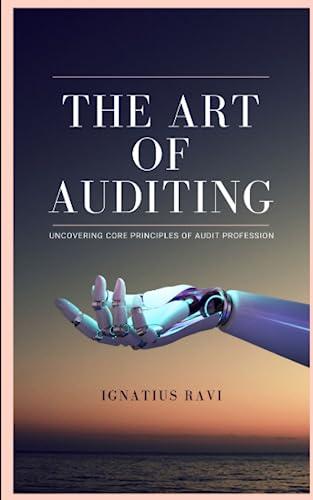Question
THIS IS NOT A QUESTION, THIS IS THE QUESTION WITH THE CORRECT ANSWER BECAUSE WHEN I WAS DOING THIS, THERE WASN'T ONE WITH THE CORRECT
THIS IS NOT A QUESTION, THIS IS THE QUESTION WITH THE CORRECT ANSWER BECAUSE WHEN I WAS DOING THIS, THERE WASN'T ONE WITH THE CORRECT FULL ANSWER!!!
The financial statements for Armstrong and Blair companies are summarized here:
 The companies are in the same line of business and are direct competitors in a large metropolitan area. Both have been in business approximately 10 years and each has had steady growth. Despite these similarities, the management of each has a different viewpoint in many respects. Blair is more conservative, and as its president said, We avoid what we consider to be undue risk. Both companies use straight-line depreciation, but Blair estimates slightly shorter useful lives than Armstrong. No shares were issued in the current year and neither company is publicly held. Blair Company has an annual audit by a CPA, but Armstrong Company does not. Assume the end-of-year total assets and net equipment balances approximate the years average and all sales are on account.
The companies are in the same line of business and are direct competitors in a large metropolitan area. Both have been in business approximately 10 years and each has had steady growth. Despite these similarities, the management of each has a different viewpoint in many respects. Blair is more conservative, and as its president said, We avoid what we consider to be undue risk. Both companies use straight-line depreciation, but Blair estimates slightly shorter useful lives than Armstrong. No shares were issued in the current year and neither company is publicly held. Blair Company has an annual audit by a CPA, but Armstrong Company does not. Assume the end-of-year total assets and net equipment balances approximate the years average and all sales are on account.
- Calculate the following ratios. TIP: To calculate EPS, use the balance in Common Stock to determine the number of shares outstanding. Common Stock equals the par value per share times the number of shares. (Use 365 days in a year. Do not round intermediate calculations and round your final answers to 2 decimal places.)
CORRECT ANSWER!!!!

EXPLANATION:
1.
Tests of Profitability: 1. Net Profit Margin Armstrong Company: $50,000 $465,000 = 10.75% Blair Company: $95,000 $825,000 = 11.52% 2. Gross Profit Percentage Armstrong Company: ($465,000 $250,000) $465,000 = 46.24% Blair Company: ($825,000 $410,000) $825,000 = 50.30% 3. Fixed Asset Turnover Armstrong Company: $465,000 $190,000* = 2.45 Blair Company: $825,000 $310,000* = 2.66 4. Return on Equity Armstrong Company: ($50,000 0) [($255,000 + $236,000) 2] = 20.37% Blair Company: ($95,000 0) [($395,000 + $445,000) 2] = 22.62% 5. Earnings per Share Armstrong Company: $50,000 15,500 shares = $3.23 Blair Company: $95,000 20,500 shares = $4.63 6. Price/Earnings Armstrong Company: $20 $3.23 = 6.19 Blair Company: $28 $4.63 = 6.05 Tests of Liquidity: 7. Receivables Turnover Armstrong Company: $465,000 [($45,000 + $25,000) 2] = 13.29 Blair Company: $825,000 [($43,000 + $35,000) 2] = 21.15 Days to Collect Armstrong Company: 365 13.29 = 27.46 Blair Company: 365 21.15 = 17.26 8. Inventory Turnover Ratio Armstrong Company: $250,000 [($97,000 + $110,000) 2] = 2.42 Blair Company: $410,000 [($50,000 + $50,000) 2] = 8.20 Days to Sell Armstrong Company: 365 2.42 = 150.83 Blair Company: 365 8.20 = 44.51 9. Current Ratio Armstrong Company: $195,000 $110,000 = 1.77 Blair Company: $112,000 $60,000 = 1.87 Tests of Solvency: 10. Debt-to-Assets Armstrong Company: $180,000 $435,000 = 0.41 Blair Company: $440,000 $835,000 = 0.53
*The problem indicates that the end-of-year ending balance approximates the average for the year. Note: Data are not available for calculating the Times Interest Earned Ratio.
Armstrong Company Blair Company Balance Sheet Cash Accounts Receivable, Net Inventory Equipment, Net Other Assets Total Assets Current Liabilities Notes Payable (long-term) Total Liabilities Common Stock (par $10) Additional Paid-in Capital Retained Earnings Total Liabilities and Stockholders' Equity Income Statement Sales Revenue Cost of Goods Sold Other Expenses Net Income Other Data Estimated value of each share at end of year Selected Data from Previous Year Accounts Receivable, Net Inventory Equipment, Net Notes Payable (long-term) Total Stockholders' Equity $ 40,000 45,000 110,000 190,000 50,000 $ 435,000 $ 110,000 70,000 180,000 155,000 35,000 65,000 $ 435,000 $ 27,000 35,000 50,000 310,000 413,000 $ 835,000 $ 60,000 380,000 440,000 205,000 115,000 75,000 $ 835,000 $ 465,000 250,000 165,000 $ 50,000 $ 825,000 410,000 320,000 $ 95,000 $ 20 $ 28 $ 25,000 97,000 190,000 70,000 236,000 $ 43,000 50,000 310,000 75,000 445,000 Ratio Armstrong Company Blair Company 10.75 % 46.24 % 11.52 % 50.30 % 2.45 2.66 20.37 % 22.62% $ $ 3.23 $ 4.63 6.19 6.05 Tests of Profitability: 1. Net Profit Margin 2. Gross Profit Percentage 3. Fixed Asset Turnover 4. Return on Equity 5. Earnings per Share 6. Price/Earnings Ratio Tests of Liquidity: 7. Receivables Turnover 7. Days to Collect 8. Inventory Turnover 8. Days to Sell 9. Current Ratio Tests of Solvency: 10. Debt-to-Assets 13.29 21.15+/-0.1 27.46+/-0.2 17.26+/-0.2 2.42 8.20 150.83+/-0.2 44.51 -02 1.77 1.87 0.41 0.53Step by Step Solution
There are 3 Steps involved in it
Step: 1

Get Instant Access to Expert-Tailored Solutions
See step-by-step solutions with expert insights and AI powered tools for academic success
Step: 2

Step: 3

Ace Your Homework with AI
Get the answers you need in no time with our AI-driven, step-by-step assistance
Get Started


